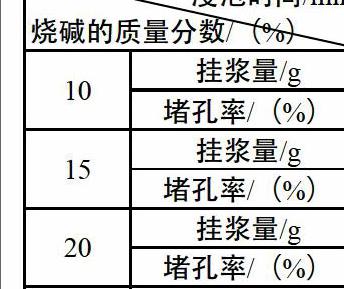Oil Prices on The Decline
By+Fang+Hua


In the past several months, oil prices on the international market have dropped 25 percent from a high point in June, which will have a subtle influence on the global political and economic scene.
Despite claims that oil prices have hit a low point, the future trend is hard to predict owing to complicated factors, such as geopolitical tensions as well as the current oversupply worldwide.
Reasons for price drop
On October 24, closing prices for crude futures traded on New York and London markets were $81.01 and $86.13 per barrel respectively, plunging more than a quarter from $107.26 and $115 per barrel in June. Oil prices have been falling for the past four months for a variety of reasons.
A major factor is that oil supplies are abundant and increasing. According to the monthly market indicators issued by the Organization of Petroleum Exporting Countries (OPEC), the production of crude oil of OPEC in September was 30.47 million barrels per day, increasing 402,000 barrels more than that in August and reaching the highest level since August 2013.
At present, production from OPEC members accounts for one third of the global total. Iraq, Iran and Libya have expanded production and exports. Whats more, abundant production of high-quality shale oil in the United States has had a remarkable influence in driving down the price of oil.
A signed article in the Financial Times said that U.S. crude oil production has increased 80 percent since 2008. Currently, its daily oil production is 2.9 million barrels more than that in 2008. With a revolutionary technological breakthrough in terms of shale, the United States appears to be the second largest oil-producing country in the world following Saudi Arabia.
Oil demand in many markets is weak due to sluggish economic growth. In the World Economic Outlook report released by the International Monetary Fund in October, the growth forecast for the world economy was revised downward to 3.3 percent for this year, 0.4 percentage points lower than in the April report. The global growth projection for 2015 was lowered to 3.8 percent, largely owing to weaker-thanexpected global activity in the first half of this year. For instance, the EU has been confronted with a series of difficulties in economic recovery and emerging econo- mies are undergoing sluggish growth, which have dragged down oil prices.
Behind the oil price drop, there are also complicated political factors engendered by the wrestling between the United States and Russia. The United States and its Western allies have been imposing several rounds of economic sanctions on Russia for its role in the Ukraine crisis since March.
Alexei Kudrin, former Russian Finance Minister, said that the United States and other major oil-exporting countries have squeezed down oil prices in order to pressure Russia. The oil industry is a pillar of the Russian economy. Falling oil prices will have an impact on the Russian economy. This“conspiracy theory,” then, is not entirely groundless speculation.
Generally speaking, the oil price drop inevitably damages the interests of oil-exporting countries. Saudi Arabia and other OPEC members should have reduced oil production, but they seem to have no such plans. Saudi Arabia and many OPEC member states in the Middle East are U.S. allies, and may have sided with the United States in dealing an economic blow to Russia.
In the past months, the U.S. dollar has appreciated markedly. A stronger dollar inevitably pushes down dollar-denominated oil prices. Analysts said that the U.S. dollar, now in a new up cycle, will continue to go up in the short run.
To some extent, the oil price drop looks like an economic action against Russia. Many Russian observers believe that the United States and its allies plan to hurt the Russian economy through driving down oil prices, and then cause social turbulence in the country. Russian President Vladimir Putin said on October 17 that the global economy would collapse if oil price was allowed to remain at around $80 a barrel for too long.
Depressed oil prices could take a bite out of the Russian economy, which might constitute a heavier blow to Russia than economic sanctions and even military threats.
The United States is tending to rely increasingly on domestic shale oil and gas, which makes it more powerful in terms of energy. Today, the United States has transformed its status in the oil trade and is now an oil-exporting country.
In September, the oil output in the United States reached 8.7 million barrels a day, hitting its highest level since July 1986. The figure is expected to be 9.5 million barrels in 2015. In the first nine months of this year, daily oil imports to the United States on average were less than half the number 10 years ago. At present, around one third of newly added oil supplies worldwide are produced in the United States.
According to a recent estimate by the Swiss National Bank, the cost of oil production in Saudi Arabia is the lowest, at only $7 per barrel. It is $30 per barrel in Russia and could be as high as $125 for exploiting a barrel of oil in the polar regions. As for the United States, the offshore oil production costs $59 per barrel and its shale oil reaches$75 per barrel. So it is clear to see which party benefits from the oil price of $85 per barrel. Falling oil prices will add new momentum to the U.S. economy.
Citibank has also indicated in a recent report that falling oil prices are equivalent to providing a stimulus of $1.1 trillion for the global economy.
Far-reaching influences
The drop in prices has exerted the opposite influence on oil producers and consumers.
Oil-producing countries, including Russia, Iran and Venezuela, have suffered a heavy impact from the downtrend. Oil exports account for a large proportion of fiscal revenue of governments in these countries—45 percent in Russia, 50 percent in Iran and 96 percent in Venezuela, respectively. Moreover, their financial budgets are based on an estimated breakeven price of oil, which is the line between profit and loss. Above the price, their government finance experiences a surplus, otherwise it leads to financial deficit. The breakeven price is $102 per barrel for Russia, $100 for Iran, and $120 for Venezuela. Obviously, the oil price drop will force these countries to face great financial risks.
Many international financial organizations have lowered Russias growth forecast. According to the Financial Times, if the price remains between $80 and $90 a barrel, the Russian economy could sustain itself for about two years.
Russia has taken measures to deal with the risks caused by the price drop. In the last six months, the Ruble has depreciated by nearly 20 percent. Russia also strengthened protection of its energy security. Russian Prime Minister Dmitry Medvedev recently demanded that new technologies be used in oil and gas exploration and development to secure Russias leading position in the worlds fossil fuels arena. Moreover, Russia has around$500 billion of foreign reserve, which could help the country withstand economic risks. More importantly, Russia has sped up the transformation of its economic structure.
Iran has claimed that the oil price drop was orchestrated by the West and some Islamic states together, claiming that they want to weaken the Iranian economy through this move. Irans Hassan Rouhani administration said it would take diplomatic measures to stop oil prices from continually dropping, adding that Iran will speed up its economic restructuring.
On its part, Venezuela has repeatedly called on OPEC to take actions to stabilize oil prices.
Many oil-importing coun- tries, including India, Japan, South Korea and China, benefit from cheaper oil.
China has become the worlds largest oil importer. Imported oil accounts for 60 percent of its crude consumption. With a $1-drop in oil prices, China could save $21 per barrel for importing based on its 2013 import volume. Many industries, such as transportation and agriculture, will save on costs due to the price drop, stimulating consumption and driving economic growth.
However, falling oil prices would add new uncertainties to the world economic recovery. It will lead to a series of chain reactions in the global market. For example, many oil exporters will be forced to change their oil development pattern and energy policies, impacting current energy security for most countries.

